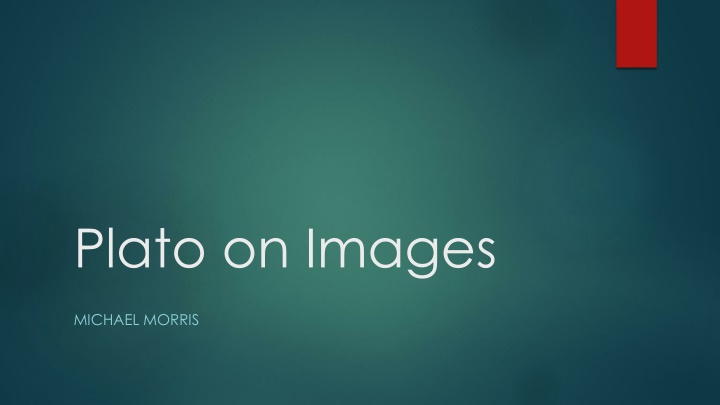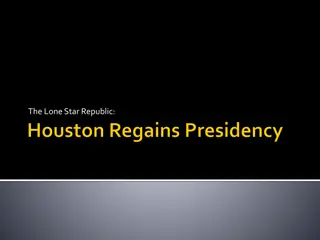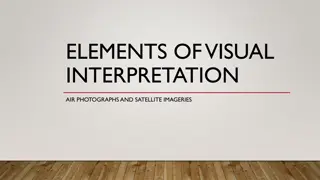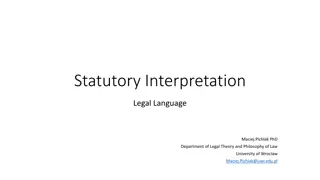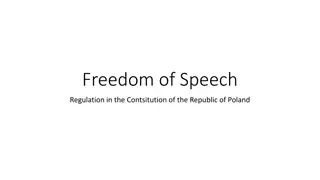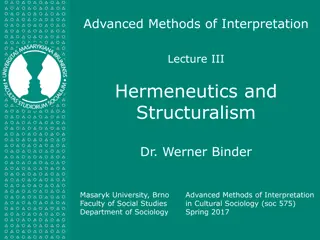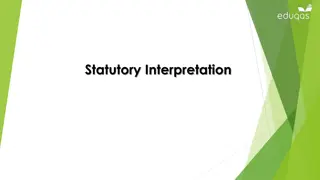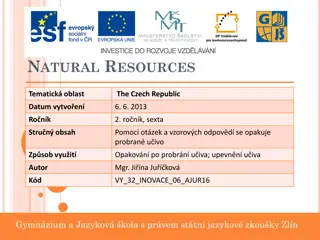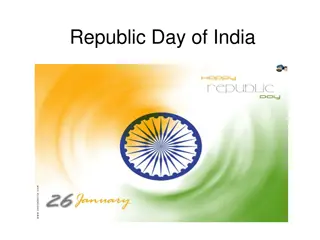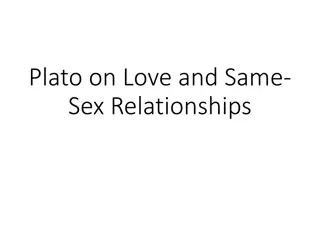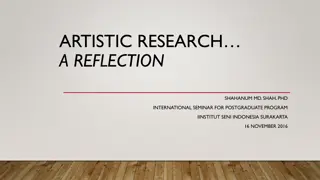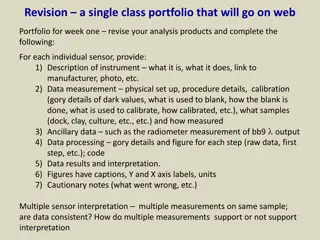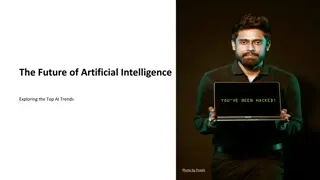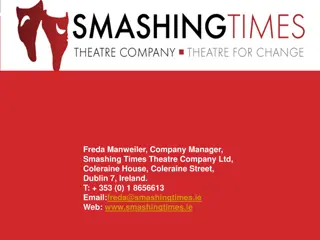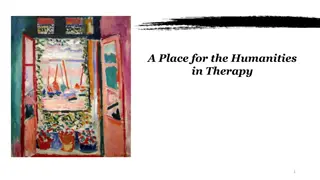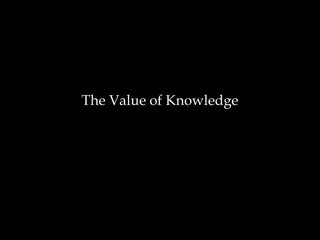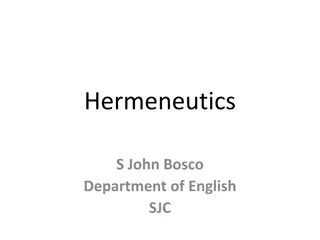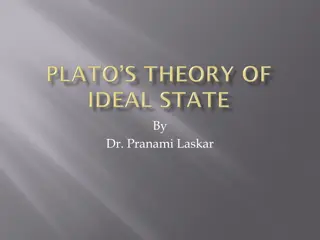Plato on Artistic Images: An Interpretation from Republic X
Delve into Plato's theory of artistic images as explored in Republic X. Discover how Plato challenges the notion of photographic realism and presents a deeper understanding of craftsmanship and creation. Gain insights into the essence of art and its connection to metaphysics in this thought-provoking lecture.
Download Presentation

Please find below an Image/Link to download the presentation.
The content on the website is provided AS IS for your information and personal use only. It may not be sold, licensed, or shared on other websites without obtaining consent from the author.If you encounter any issues during the download, it is possible that the publisher has removed the file from their server.
You are allowed to download the files provided on this website for personal or commercial use, subject to the condition that they are used lawfully. All files are the property of their respective owners.
The content on the website is provided AS IS for your information and personal use only. It may not be sold, licensed, or shared on other websites without obtaining consent from the author.
E N D
Presentation Transcript
Plato on Images MICHAEL MORRIS
Introduction I ve been digging the philosophy of language out of McDowell s argument in Mind and World, linking it to an ancient tradition, and raising worries about it. In this lecture I m going to look at the theory of artistic images apparently to be found in Plato. This is interesting in itself, and also has some importance for the interpretation of Plato s metaphysics. In the next lecture we ll see how it connects with the theme of the previous lectures.
Republic X: A hasty interpretation In Republic X Plato compares what a painter does with holding up a mirror to reflect the world (596d). He is often assumed here to be talking about realistic painting, and to assume that painters aim for photographic or trompe-l oeil realism (Annas Introduction to Plato s Republic, 338; Moss What is imitative poetry and why is it bad? , 422). It is then standardly (though not universally) said that this limited conception of what painters do means that his criticisms of art in general (and poetry in particular) are weak.
Republic X: A closer look In fact, photographic realism does not seem to be Plato s concern. Socrates begins by introducing the idea of an astonishing kind of craftsman (cheirotechn s, 596b5; demiourgos, 596d2), who can make not only all kinds of artefact, but also every kind of plant, and animals, and the earth, and the sky, and the gods. In fact, he can make anything! Notice that he is not introduced in the first instance merely as someone who can imitate every kind of thing, or who can make images of every kind of thing: he is said to be able to make every kind of thing. It is this capacity to make things which is Socrates concern here.
Where the mirror comes in It is only when Glaucon responds that such a person would be an amazing sophist that Socrates goes on to explain that the feat is one you can do yourself with a mirror. Again, Socrates does not say that if you do this you make images of things. Rather, he says that with a mirror you will quickly make the sun and the things in the sky; you will quickly make the earth, yourself and the other animals, manufactured items, plants, and everything else that was mentioned just now (596e1-3: Reeve s translation, but my emphasis).
Where the problem really lies When he turns to the painter, Socrates introduces him first as one of these amazing craftsmen who can make anything (596e6). In painting a couch the painter is said to make a couch, in a way (trop (i) ge tini, 596e10). The Form of the couch, the couch made by the carpenter, and what is produced by the painter are said to be three couches, in a sense (trittai tines klinai, 597b5), and the painter, the couchmaker, and god are said to be responsible for three kinds of couch (trisin eidesi klin n). It looks as if Socrates problem, whatever it is, is seen most clearly if we understand that in painting a picture of a couch the painter is, in a sense, making a couch.
The Sophist Something very similar happens in the Sophist, in a sequence of passages which has close parallels with this section of Republic X. At 233d9-10 the Eleatic Visitor introduces the idea of someone who can do and make absolutely everything (sunapanta) with a single craft (techn ), and when asked to explain what he means by absolutely everything , says it includes you and me, and, as well as us, the other animals and trees (233e5-6). When Theaetetus suggests that this person must be a kind of farmer, because he can make animals, the Visitor says he can also make the sea and the earth and the sky and the gods in fact, everything (234a3-5).
The key point in the Sophist When he eventually explains (at 234b5-10), the Visitor says that with the painter s craft one can make imitations (mim mata) which have the same names as real things (homonyma t n ont n). So on this view although the Visitor does not draw the point out here since the painter of a couch will make something which has the same name as what he is producing an image of, he will be making a couch.
A literal interpretation The claim is then that when the painter paints a couch, he makes a couch. When he paints a tree, he makes a tree. When he paints the sky, he makes the (or a) sky. After he has done his work, there is a couch which the painter has made, which was not there before. Similarly for the tree and the sky which the painter makes. In each case, a new entity is brought into being which has the same name as the entity which is being imitated. If this is what Plato has in mind, he is, in effect, offering an account of imitation, and of the idea of an image or likeness. To imitate something is to produce another thing which has the same name as the thing which is imitated. To make an image or likeness of something is to make a kind of duplicate of it.
Seeing figures in paintings The view I ve attributed to Plato provides a distinctive response to a familiar problem in contemporary philosophy of art: what is it to see, e.g., the three Magi in Giotto s fresco? On the approach suggested by Plato, Giotto has created three Magi in the painting. They are people, in a way. We might make a comparison with a toy duck. A toy duck really exists, but is not a real duck. Is it a duck? Yes, in a way. Similarly, the three Kings you can see in the fresco really exist, but are not real people. Are they people? Yes, in a way.
A passage in the Sophist If this is Plato s view, it makes good sense of a discussion between Theaetetus and the Eleatic Visitor in the Sophist (240-a7-c1): Theaetetus: Well, what can we say an image [eid lon] is other than another such thing as the true one, made as a likeness of it? Visitor: Do you mean another such true one or what do you mean by such a thing? Theaetetus: Certainly not a true one, but one which is merely like it. Visitor: And by the true one you mean the one which really is? Theaetetus: Yes. Visitor: So the one which is not true is the opposite of true? Theaetetus: Of course. Visitor: So you mean that what is like is not really [whatever: a person, e.g.], since you say it is not true? Theaetetus: But it is, in a way [perhaps: it is whatever a person, e.g., in a way]. Visitor: But not truly, according to you. Theaetetus: No except that it really is an image [eik n]. Visitor: So what we call an image really is [something: an image], though we say it is not really [whatever: a person, e.g.]
Republic Book X and Book VI In Book X of the Republic, the images which painters (and poets) produce are said to be at third remove from reality: the suggestion is that the painted couch is an image of a couch made by a carpenter, and the couch made by the carpenter is an image of the Form of the couch, which is made by God. The key image of the divided line in Book VI makes the same point. The line is divided according to a certain ratio; and then each part is divided again according to the same ratio. This ratio expresses the relation between an image and what it s an image of. Artistic figures are images of perceivable things, and perceivable things are images of the forms.
Republic Book V With this in mind we can understand what Plato dislikes about the sight- lovers in Book V: what they attend to perceivable things roll around somewhere (pou) between what is not and what purely is (479d2-4). This idea of something being somehow between what is not and what purely is makes sense if we think of perceivable things being like artistic images, on Plato s view of them: the Magi in the Giotto fresco are people, in a way, but also, in a way not they re not real people.
Magrittes pipe I think this interpretation makes sense of Plato. It also offers an attractive account of artistic representation. For example, it provides a distinctive response to Magritte s famous painting, La trahaison des images. It s a painting of a pipe, with underneath it the caption Ceci n est pas une pipe , This is not a pipe. On the approach I m suggesting we find in Plato, this is puzzling: yes, of course, it s a pipe (in a way); but no, it s not a pipe (not a real pipe).
A general point about artistic representation More importantly, this view gets something right about artistic representation which almost all other views get wrong: (ND)Attending to the medium of a painting (e.g.) cannot inevitably be a distraction from attending to its content, or vice versa. If (ND) were not true, it s hard to see how a painter (e.g.) could paint at all.
Comparison with other theories But most theories are incompatible with (ND). Ernst Gombrich (Art and Illusion) thinks that when we are aware of the content of a painting when we can see the Magi in the Giotto, e.g. we are under the illusion that we are seeing real people. But we can t be under that illusion if we notice the paint, or indeed anything about the way it s painted. Kendall Walton (Mimesis as Make-Believe)thinks that when we look at a painting of (e.g.) the Magi we make-believe or imagine that we are seeing real people. But this looks an impossible feat unless we somehow manage to forget about the paint and the way it s painted.
Next time Next time I ll suggest that this approach to art opens the way to an alternative account of the relation between all forms of representation (including linguistic representation) and the world.
